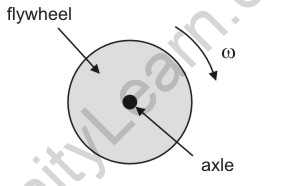Table of Contents
In physics, a moment of inertia is a quantitative measure of a body’s rotational inertia—that is, the resistance that the body exhibits to having its speed of rotation about an axis shifted as a result of torque application (turning force) . The axis can be internal or external, as well as fixed or not. However, the moment of inertia (I) is always specified in relation to that axis and is defined as the sum of the products obtained by multiplying the mass of each particle of matter in a given body by the square of the distance from the axis. When calculating angular momentum for a rigid body, the moment of inertia is analogous to mass in linear momentum.
The linear momentum p is equal to the mass m multiplied by the velocity v, whereas the angular momentum L is equal to the moment of inertia I multiplied by the angular velocity.
The moment of inertia unit is a composite unit of measurement. In the International System (SI), m is measured in kilogrammes and r is measured in metres, with I (moment of inertia) having the dimension kilogram-metre square. In the United States, m is measured in slugs (1 slug = 32.2 pounds) and r is measured in feet, with I expressed in terms of the slug-foot square.

Moment of Inertia
The moment of inertia is defined as the quantity expressed by the body resisting angular acceleration, which is the sum of the product of each particle’s mass and its square of the distance from the axis of rotation. In simpler terms, it is a quantity that determines the amount of torque required for a given angular acceleration in a rotational axis. The moment of inertia is also known as the angular mass or rotational inertia. The SI unit for the moment of inertia is kg m2.
Moment of Inertia Formula
In general, Moment of Inertia is written as I = m × r2
where,
m = The sum of the mass products.
r = Distance from the rotation’s axis.
as well as the integral form:I = ∫dI = ∫0M r2 dm
M1 L2 T0 is the dimensional formula for the moment of inertia.
The moment of inertia, like mass, plays the same role in linear motion. It is a measurement of the resistance of a body to a change in rotational motion. It is constant for a given rigid frame and rotation axis.
Moment of inertia, I = ∑mi ri2. . . . . . . (1)
Kinetic Energy, K = ½ I ω2 . . . . . . . . . (2)
Factors that Influence Moment of Inertia
The moment of inertia is affected by the following factors:
- The material’s density
- The body’s shape and size
- Rotational axis (distribution of mass relative to the axis)
FAQs
Q. What is the formula for the moment of inertia?
Ans: The moment of inertia is calculated as the “sum of the product of mass” of each particle multiplied by the “square of its distance from the axis of rotation.”
The Moment of Inertia formula is written as I = Σ miri2.
What is the distinction between inertia and moment of inertia?
The resistance to angular acceleration is defined as the moment of inertia (i.e. distribution of mass). Inertia is a linear property of mass that describes how much an object resists a change in motion caused by a force, or how massive it is.






